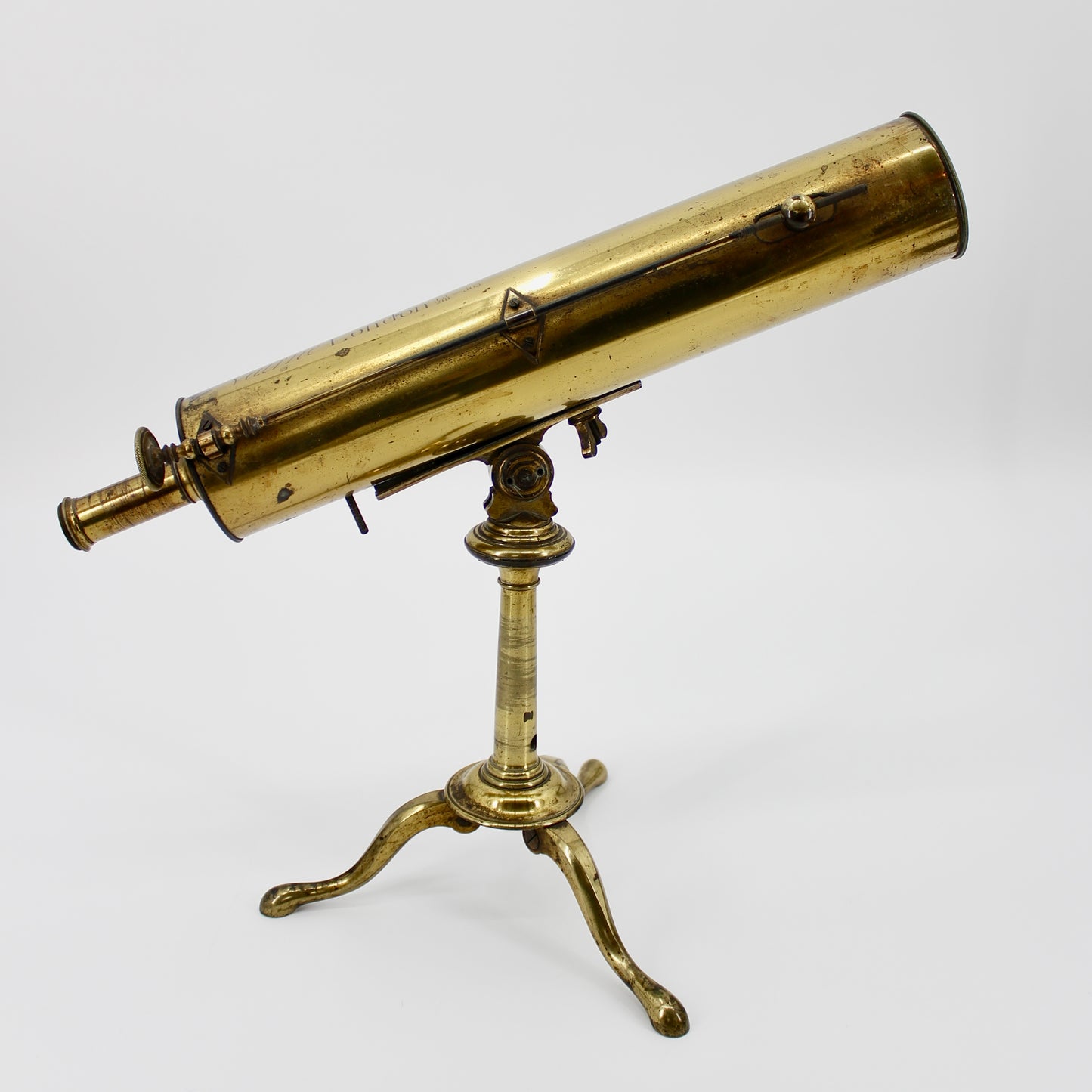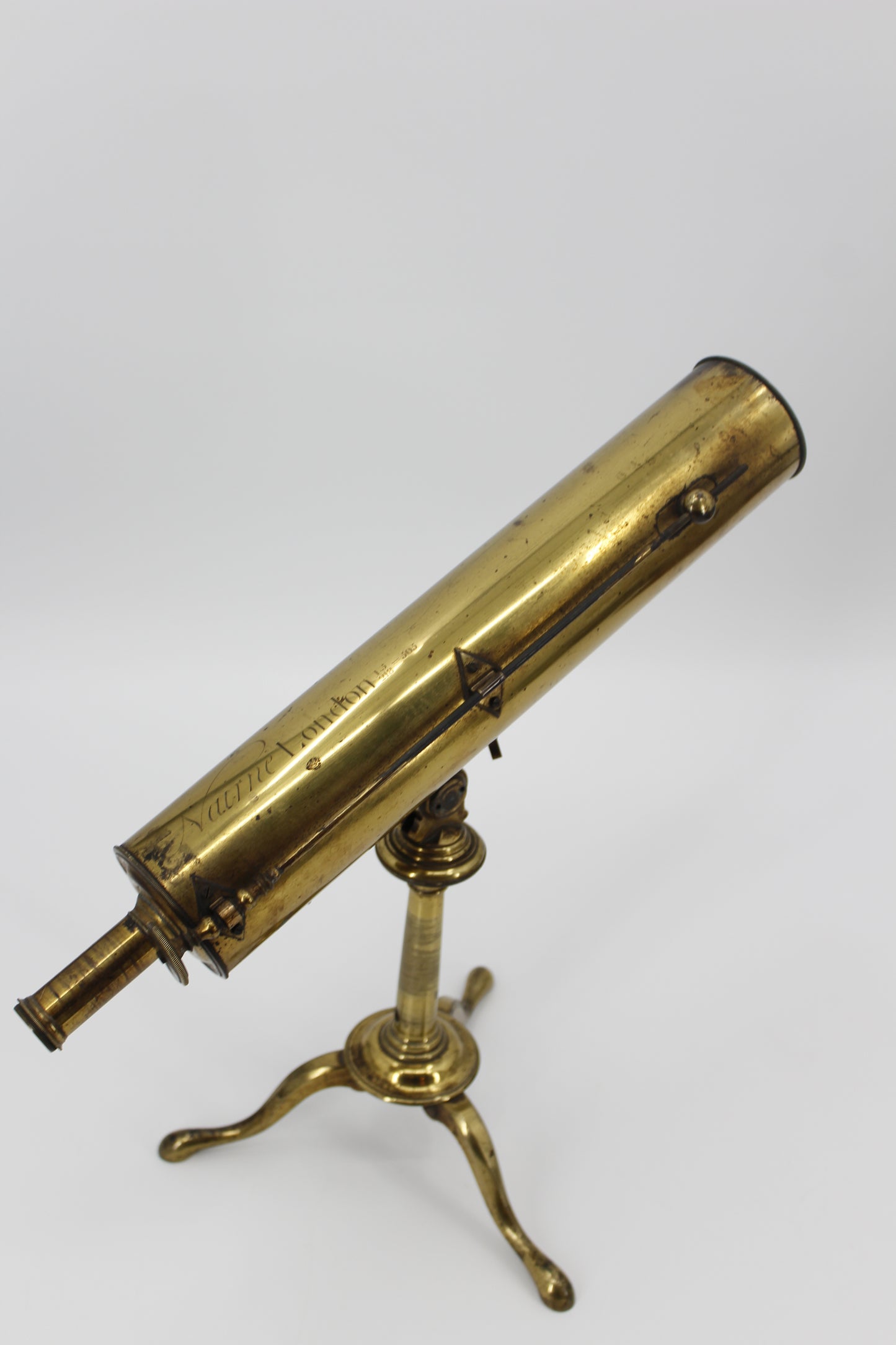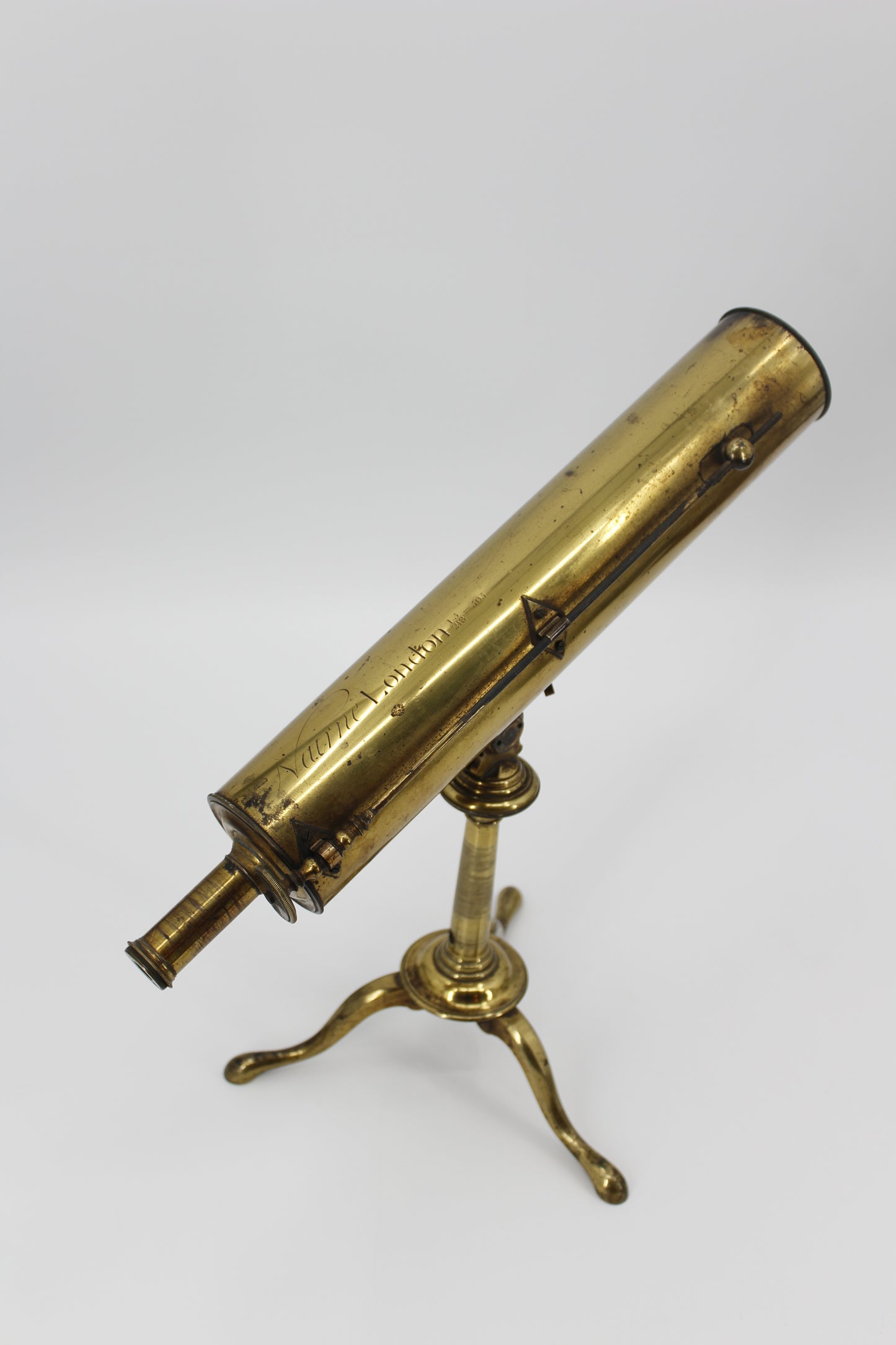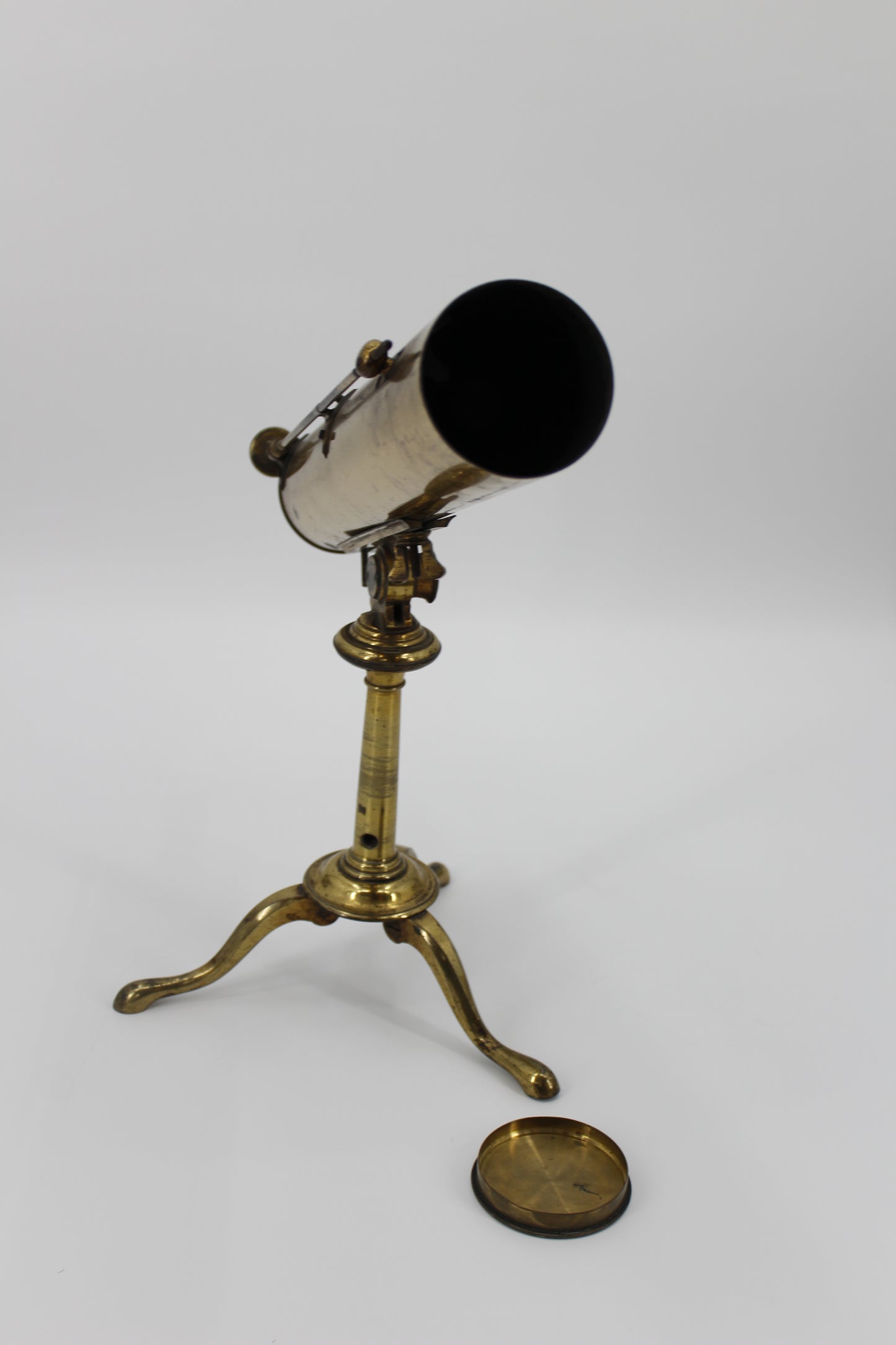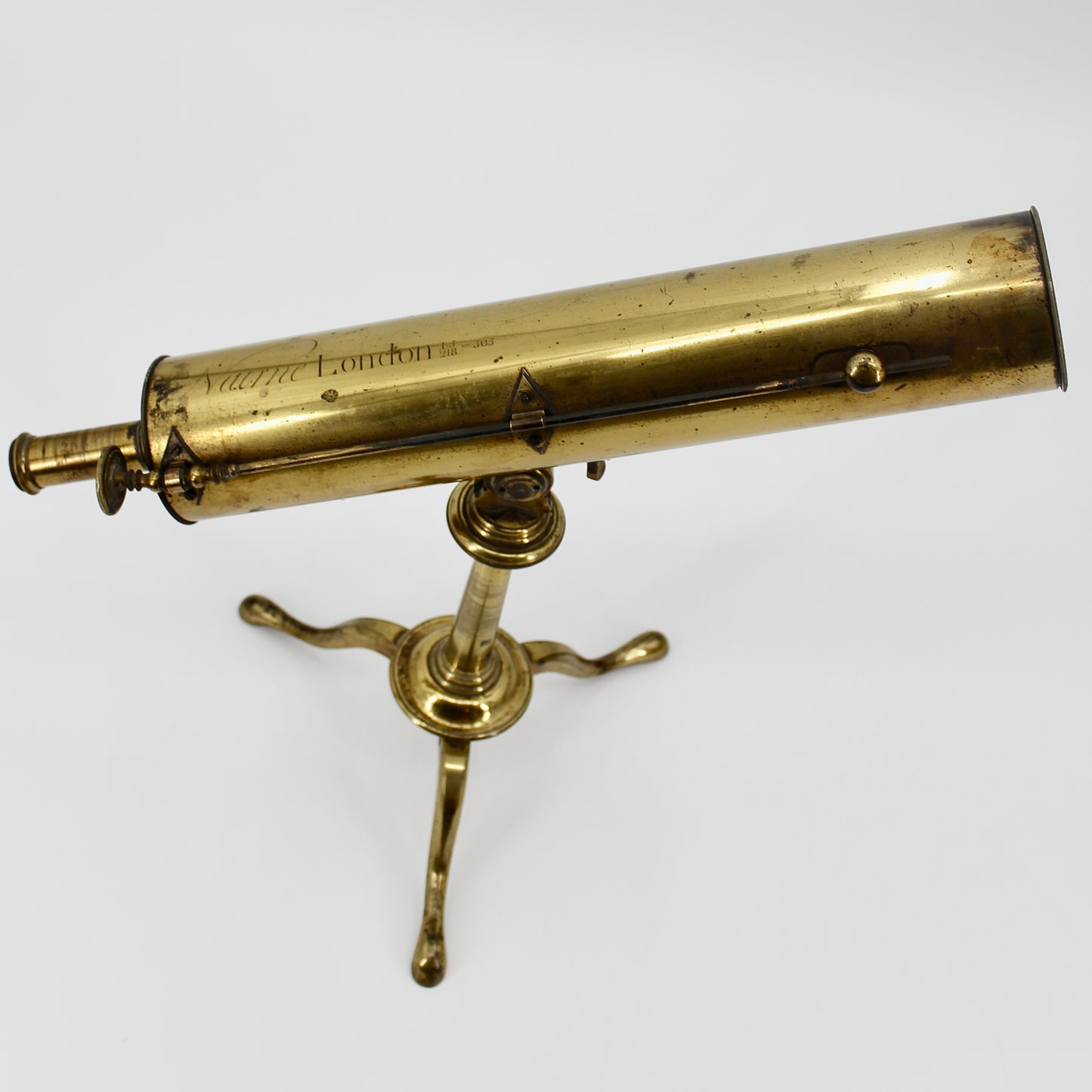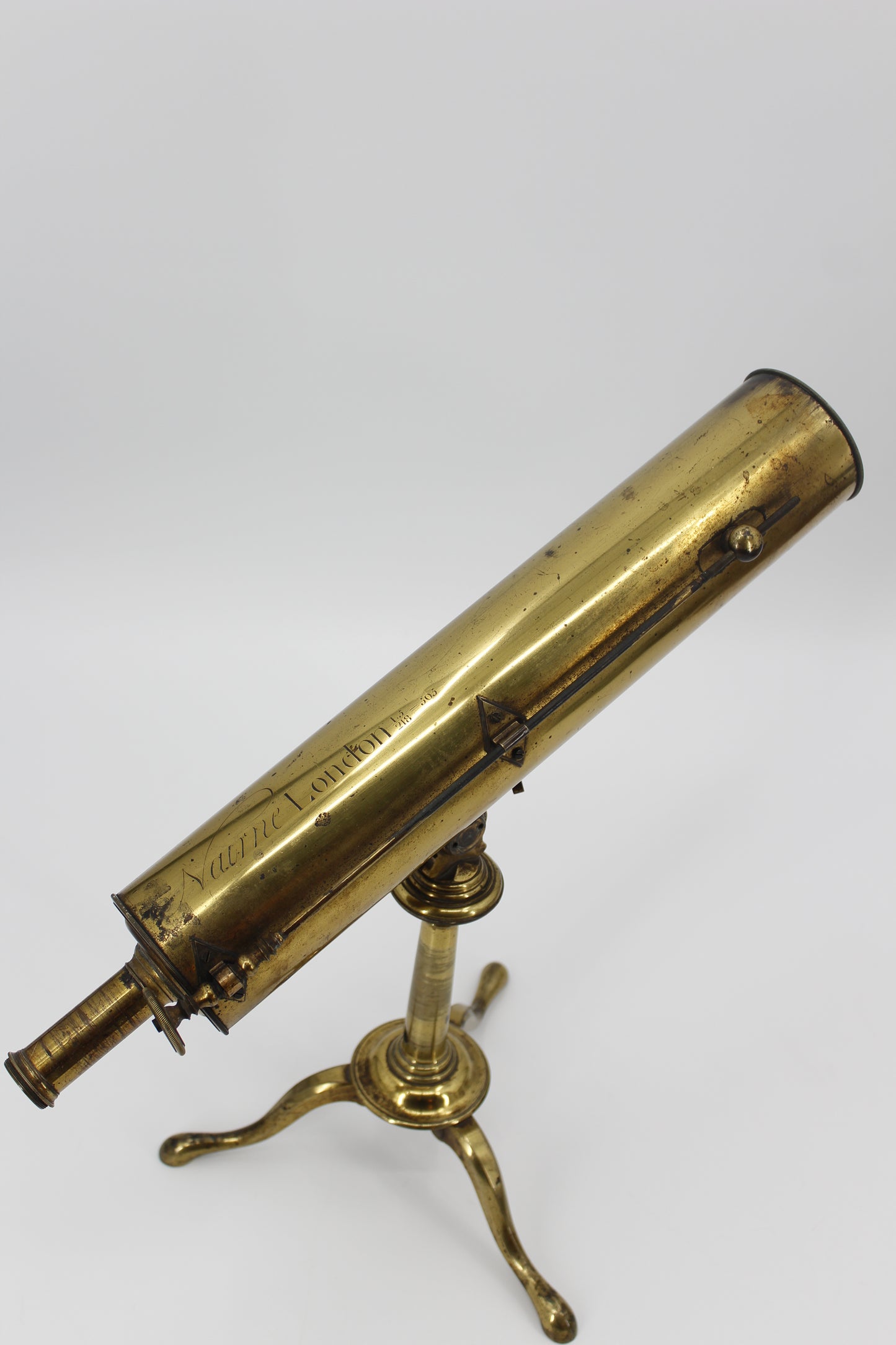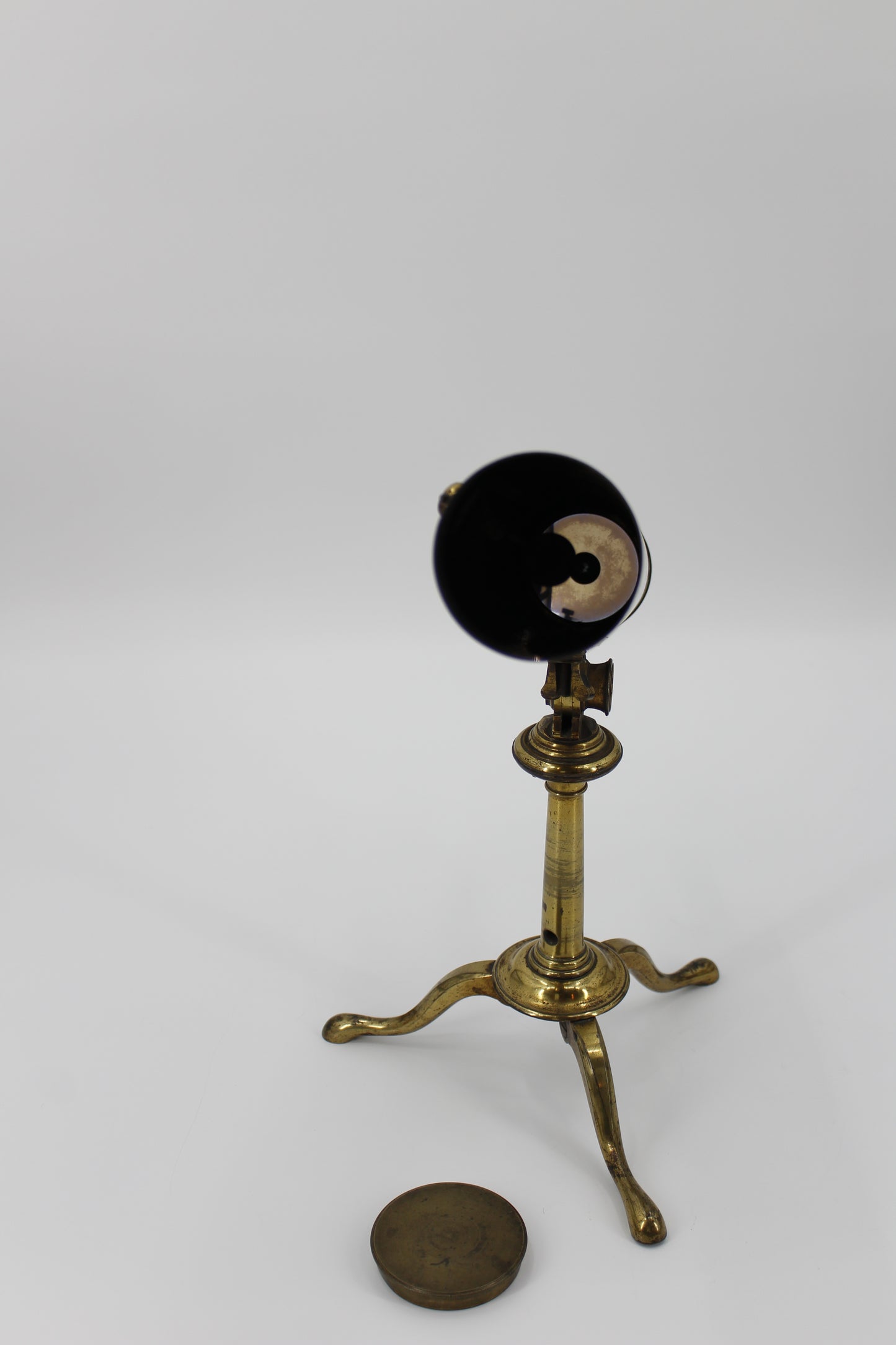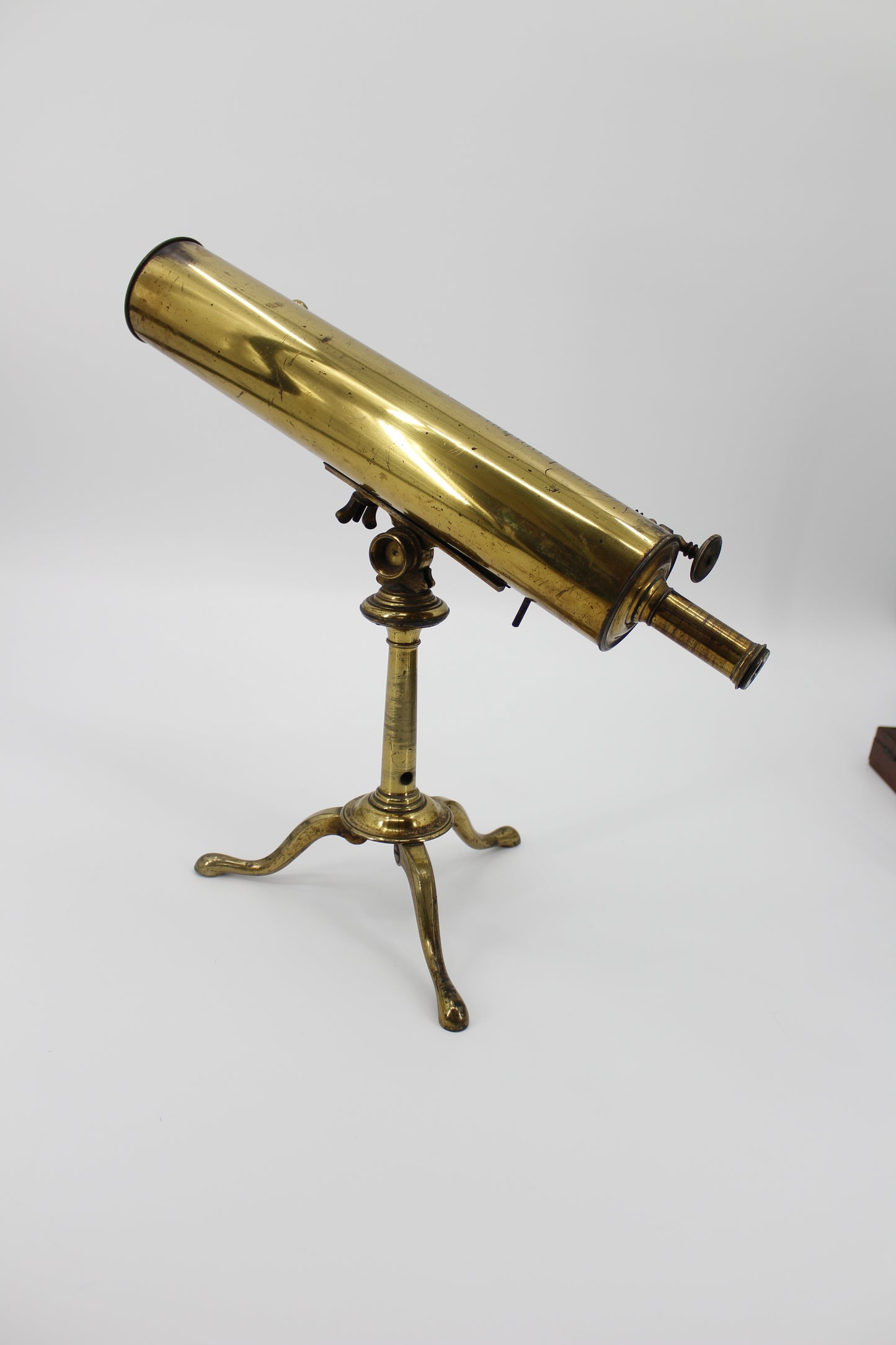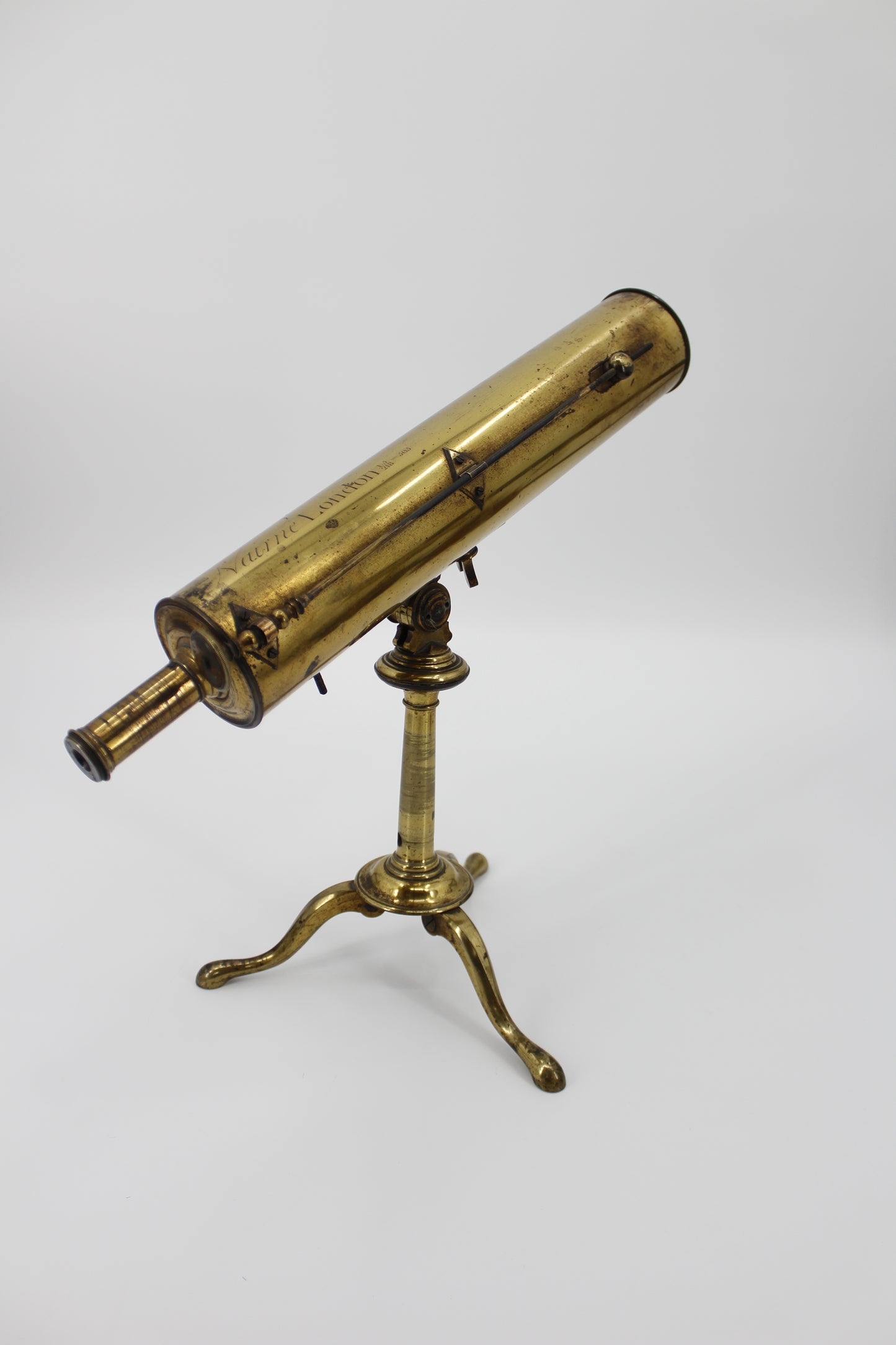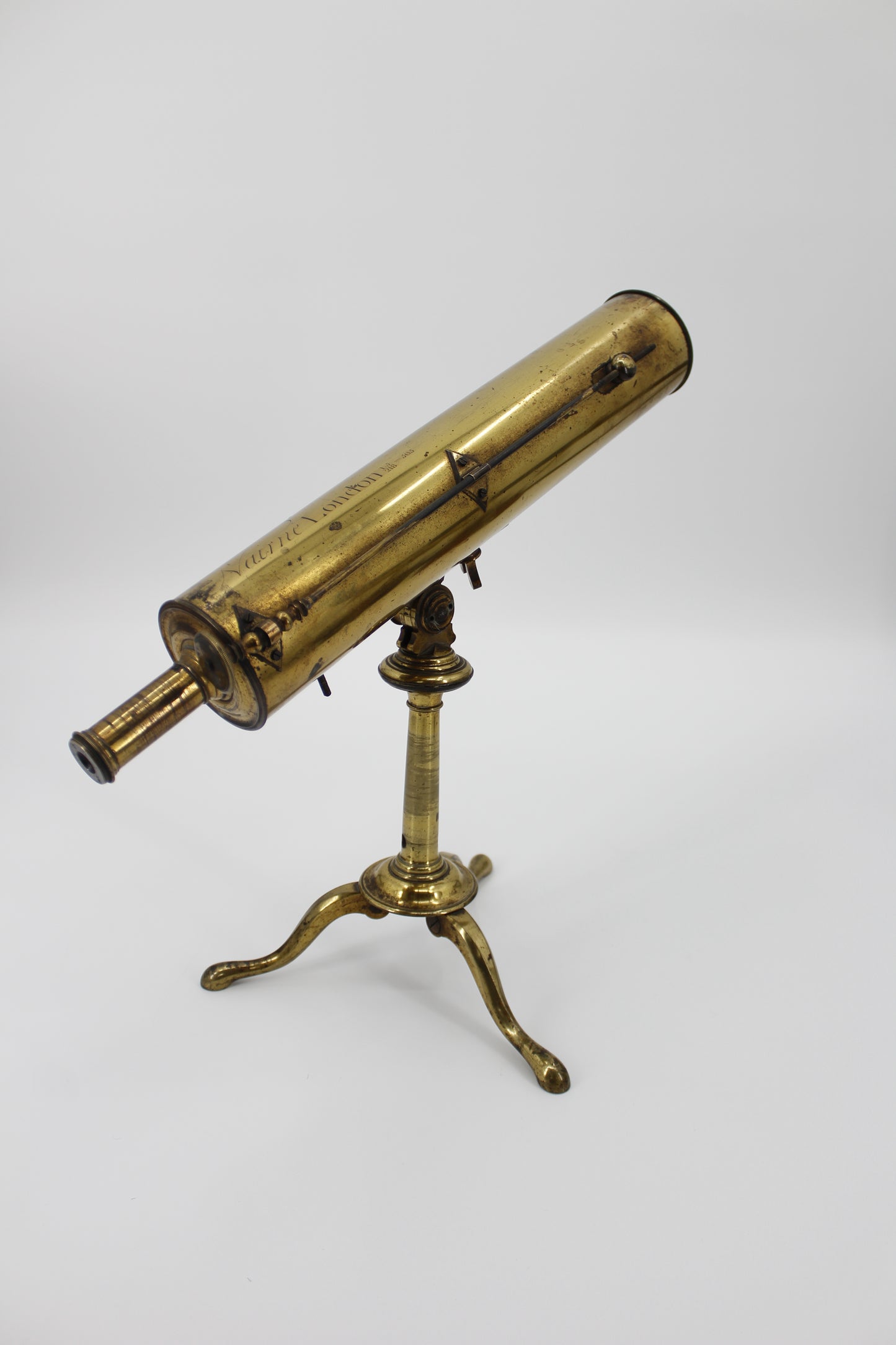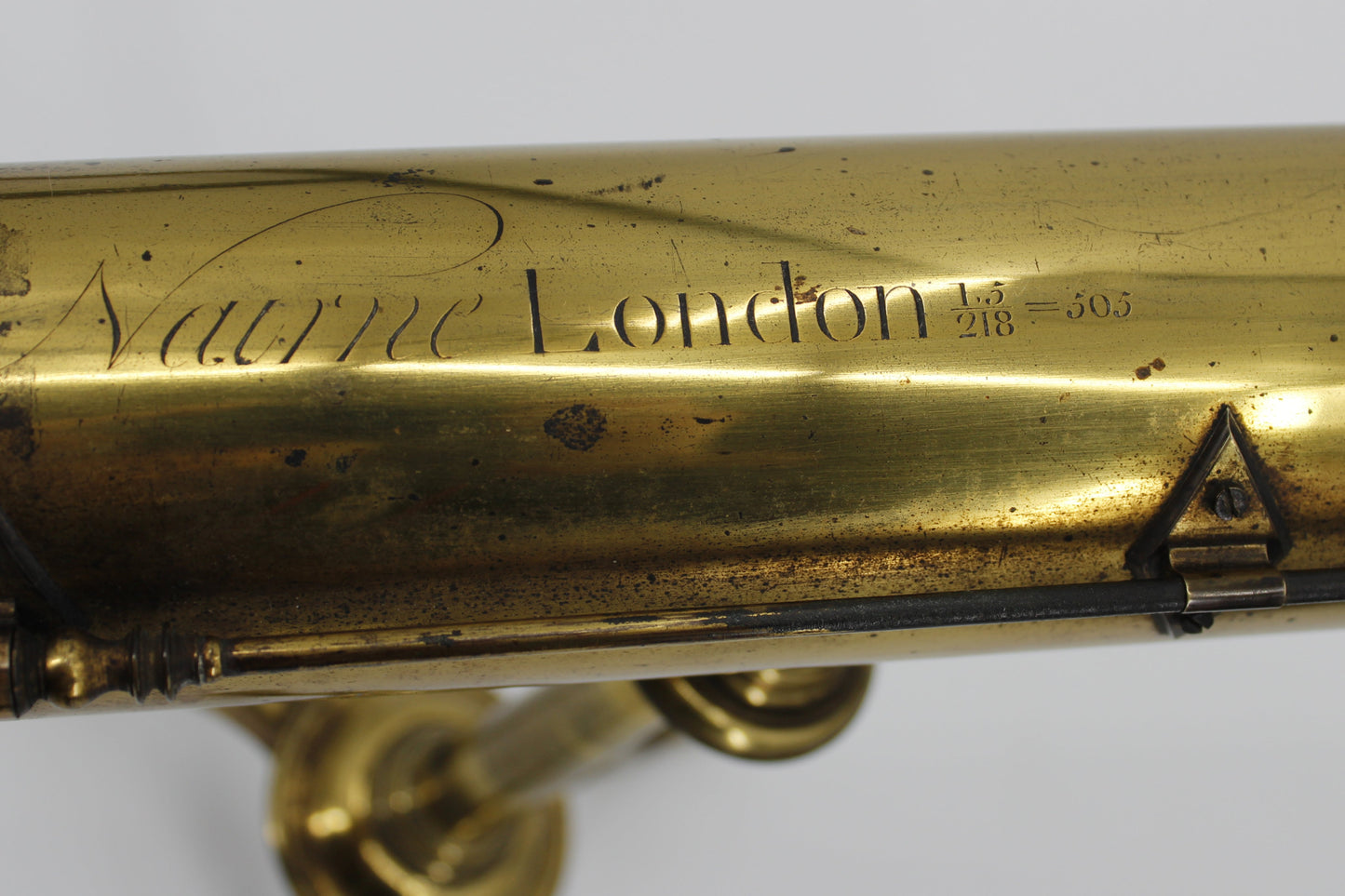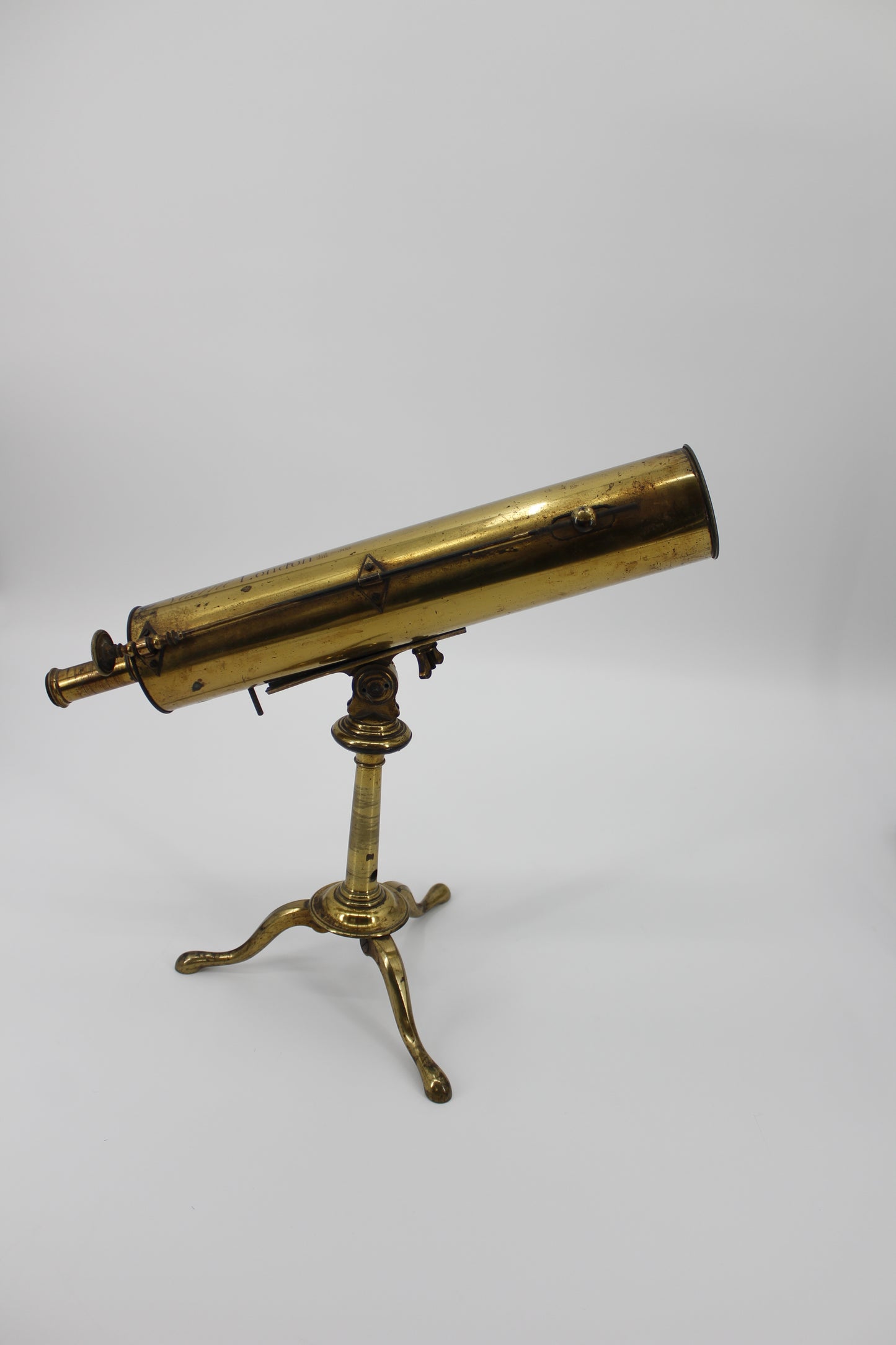Taylor Haus Galleries
18th Century Gregorian Reflecting Telescope by Edward Nairne
18th Century Gregorian Reflecting Telescope by Edward Nairne
Gregorian reflecting telescope- Incepted and designed in 1663 by James Gregory (contemporary & collaborator of Isaac Newton), successfully built by Robert Hooke in 1673. Long before the invention of the achromatic lens, Gregory solved the issue of edge diffraction on non-achromatic lenses with a revolutionary design that introduced the use of mirrors (before Gregory, telescopes used mainly lenses). The decision to forgo lenses for mirrors, eliminated edge diffraction to produce crisp, upright images. The introduction of mirrors also allowed for the construction of larger instruments, with greater magnification. The ability to see objects fainter and farther away laid the foundation for advancements in astronomy. Gregorian reflecting telescopes were further refined, with the technology leading to Newtonian (1668), then Cassegrain (1672) reflecting telescopes.
An exceptional Gregorian Reflecting Telescope by Edward Nairne of London. Circa 1760. Signed 'Nairne London 1.5/218= 505.' Edward Nairne (1726-1806), a Fellow of The Royal Society of London, was a notable early scientific & electrical instrument maker who constructed the first marine barometer and supplied instruments for Harvard University at the personal request of Benjamin Franklin.
Featured in The University of Arizona (Wyant Collection).
Featured in The University of Cambridge (Whipple Museum).
Further Source Harvard University Archives (Nasa ADS).
For Pricing & Inquiries, Please Email: info@taylorhausgalleries.com
